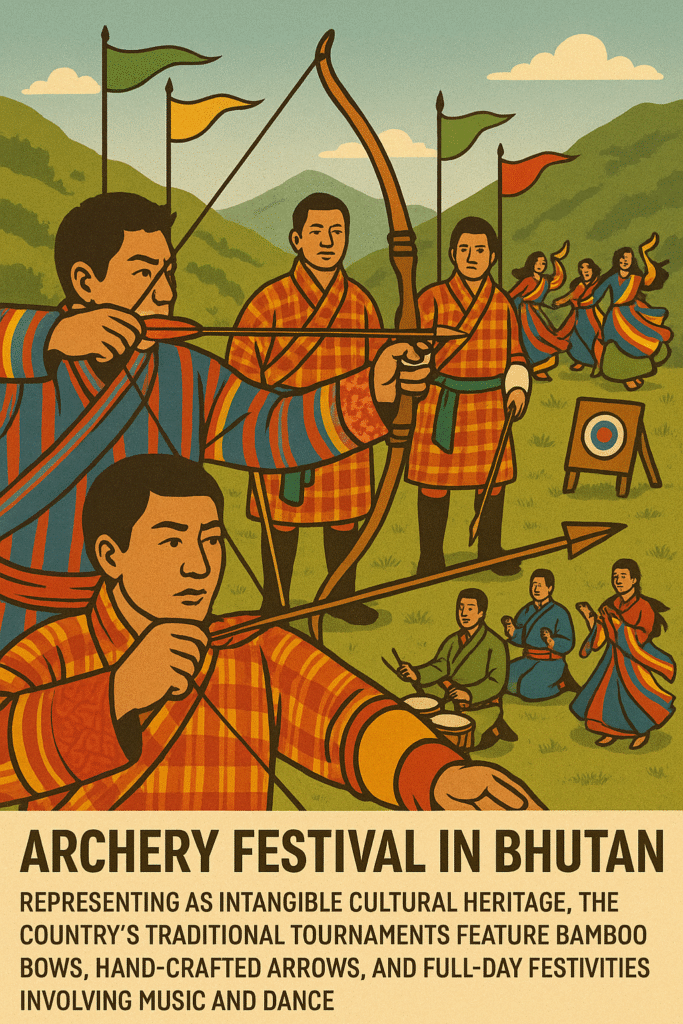Archery has captivated humanity for millennia, evolving from a crucial survival skill into a modern competitive sport that demands precision, focus, and refined technique. In its earliest incarnations, archery provided food and security for ancient civilizations—from Mesopotamia and Egypt to the Eurasian steppes—where hunters and warriors relied on handcrafted bows and arrows to sustain communities and defend territories (Wikipedia). Today, competitive archery blends tradition with innovation: athletes train rigorously to master posture and release, while engineers develop cutting-edge carbon and aluminum equipment that optimizes performance. The resurgence of archery owes much to its Olympic status (reintroduced in 1972) and its broad appeal at grassroots levels, where local clubs welcome beginners with affordable recurve setups and supportive coaching (World Archery Federation). As competitions proliferate—from school meets to the World Archery Championships—participants of all ages discover the sport’s unique combination of mental discipline and physical control. The global community is further enriched by festivals and educational programs that celebrate cultural heritage and foster inclusivity, ensuring that archery remains both a link to our past and a pathway to personal excellence.

Archery Through the Ages: A Historical Overview
The evolution of this sport charts a journey from hand-forged wooden bows to today’s precision-engineered devices. Early records in ancient China, Persia, and Egypt document its role in hunting and warfare, while medieval Europe saw the rise of the English longbow as a decisive military asset at battles such as Agincourt (Smithsonian Magazine). Its decline as a military tool began in the 16th century, but it found new life in recreational clubs and ceremonial traditions. By the 19th century, formal societies emerged in Britain and North America, setting the foundation for modern competition. The creation of the International Archery Federation in 1931 marked a new era of global standardization, leading to the sport’s return to the Olympic stage in 1972.
Archery Rules: Precision and Fairness in Competition
Competitive formats divide events by bow style—recurve, compound, and barebow—and by distance. Olympic recurve matches are typically held at 70 meters, with compound events ranging from 50 to 90 meters. Targets feature ten concentric scoring rings worth 1 to 10 points, and competitors shoot arrows in timed ends of three or six (World Archery Rulebook). Equipment regulations cover draw weight, arrow spine, and sighting devices, while match protocols ensure consistency and safety. Penalties can be applied for early draws, stepping over the line, or other procedural infractions, reinforcing the need for mental focus and strict adherence to rules.
Archery Celebrations: Major Global Festivals
Annual events celebrate the sport across continents. The Archery World Cup travels through cities like Shanghai, Berlin, and Antalya, with stages leading to a grand final that draws global viewership (World Archery World Cup). The World Archery Championships, held every two years, unite top athletes in recurve and compound disciplines. The GT Open in Italy highlights 3D formats in scenic outdoor environments, while smaller events incorporate cultural elements such as costume shoots and historical reenactments. These festivals not only showcase skill but also promote camaraderie and cross-cultural appreciation.
Read about Olympics
Archery and Culture: Bhutan’s Unique Traditions
Bhutan elevates the sport into a national celebration. Recognized by UNESCO as intangible cultural heritage, the country’s traditional tournaments feature bamboo bows, hand-crafted arrows, and full-day festivities involving music and dance (UNESCO). The Thimphu Festival, held annually, is one of the biggest cultural gatherings in the country, bringing teams from all over Bhutan to compete with pride ; it’s a platform for community bonding, traditional storytelling, and social entertainment.

Archery Giants: The World’s Best Teams and Athletes
South Korea reigns supreme in Olympic recurve events, with decades of dominance and elite training programs that start at the school level (Olympics). American compound archers such as James Lutz and Braden Gellenthien consistently top international rankings, while India’s Deepika Kumari has become a global icon. Other rising nations include Mexico, Japan, and Chinese Taipei, each producing medalists in recent years. Athletes rely on federated support, coaching science, and even mental health training to perform under the intense pressure of global competition.
Read about Historic Underdog Wins
Archery Technique: The Science of Consistency
Success depends on perfecting mechanics like stance, draw, anchor point, release, and follow-through. Beginners learn to align shoulders, draw with back tension, and release smoothly without flinching (Archery 360). Recurve bows store energy in their flexible limbs, while compound bows use cams and pulleys for increased accuracy and reduced draw weight. Tools like stabilizers and clickers help refine timing, and each arrow must be carefully selected based on weight and spine. Technological advances in bow materials, such as carbon fiber and magnesium, have drastically improved consistency and performance.
Archery Tomorrow: Innovation and Outreach
Technological and social developments are shaping the sport’s future. High-performance analytics tools and virtual training systems allow for real-time form correction and biomechanical feedback (Journal of Sports Sciences). Mixed-gender team events, first introduced at the Tokyo 2020 Olympics, bring a fresh dynamic and promote gender equity. Environmental initiatives aim to reduce the sport’s ecological impact through biodegradable fletching and recyclable targets. As global outreach programs expand access, archery continues to grow not only as a sport but as a community-building tool and lifelong discipline.
